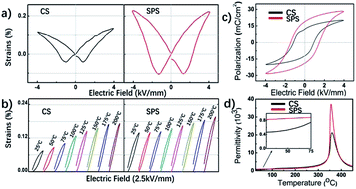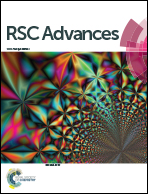Significantly improved piezoelectric performance of PZT-PMnN ceramics prepared by spark plasma sintering
Abstract
A high-performance piezoelectric material, 0.95Pb(Zr0.52Ti0.48)O3-0.05Pb(Mn1/3Nb2/3)O3 (PZT-PMnN) ceramic, was prepared by using a spark plasma sintering (SPS) method. By systematically comparing the electrical properties, the spark-plasma-sintered sample was demonstrated to be superior to a conventionally sintered sample. With respect to conventionally sintered ceramic, the d33 of spark-plasma-sintered ceramic increases from 323 pC/N to 412 pC/N, and the  increases from 318 pm V−1 to 553 pm V−1. More importantly, the mechanical quality factor (Qm) reaches 583, which is three times higher than the conventionally sintered sample (Qm ∼ 182). Furthermore, the SPS method was found to be capable of promoting other electrical properties simultaneously. Therefore, the SPS method is proposed to be an effective processing method to fabricate PZT-PMnN ceramics of higher performance.
increases from 318 pm V−1 to 553 pm V−1. More importantly, the mechanical quality factor (Qm) reaches 583, which is three times higher than the conventionally sintered sample (Qm ∼ 182). Furthermore, the SPS method was found to be capable of promoting other electrical properties simultaneously. Therefore, the SPS method is proposed to be an effective processing method to fabricate PZT-PMnN ceramics of higher performance.



 Please wait while we load your content...
Please wait while we load your content...